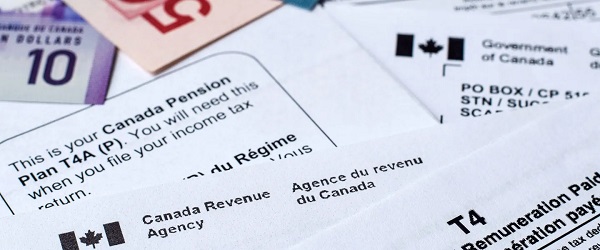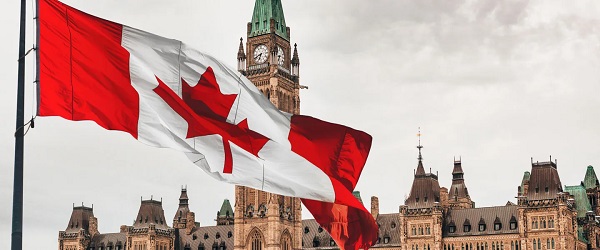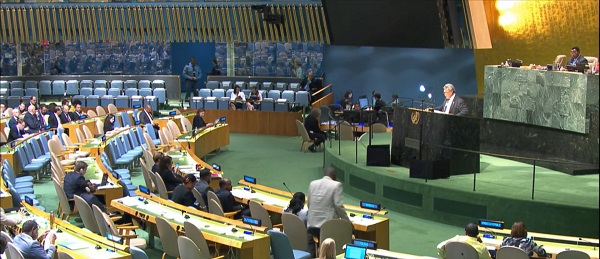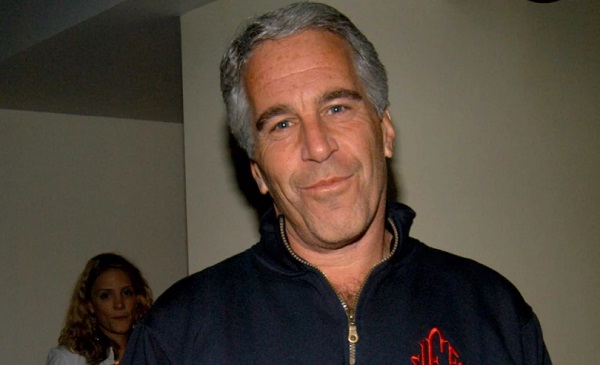Business
Reality check—Canadians are not getting an income tax cut

From the Fraser Institute
By Jason Clemens and Jake Fuss
On the campaign trail, both the Conservatives and the Liberals promised to cut personal income taxes, and with the Liberal Party winning a minority, one assumes the Carney government will fulfill the promise and reduce the bottom personal income tax rate from 15 to 14 per cent. However, in reality, due to the dismal state of federal finances, neither party actually offered a tax reduction but rather simply a deferral of taxes to the future.
The key variable in any government’s fiscal policy is spending. It represents the amount of resources the government plans to marshal for its various programs and transfers. At any given point in time, a country has only so many resources (i.e. raw materials, workers, equipment, etc.) and a government’s spending plan represents the share of those resources it intends to use for its purposes rather than leaving them in the hands of the people, families and businesses that actually created them.
Taxes are simply the way governments finance that spending. But it’s not the only way. Governments in many western countries, particularly Canada and the United States, have increasingly relied on borrowing to finance current spending. Instead of raising taxes today to pay for increased spending, governments defer those taxes into the future by borrowing and increasing government debt.
According to the Trudeau government’s last economic update, Ottawa expected to collect $516.2 billion this year (2025/26) but planned to spend $558.3 billion on programs and debt interest payments. The difference—$42.2 billion—represents how much the federal government plans to borrow.
According to the Liberal Party’s election platform, the promised tax cut to the lowest personal income tax rate will reduce revenues by a projected $4.2 billion this year. If the Liberal platform also reduced spending by at least the same amount, the tax cut would represent a real reduction in the amount of resources used by government and thus a genuine reduction in the tax bill for Canadians.
But the Liberal platform doesn’t reduce spending. In fact, it proposes marked increases ($29.4 billion this year) on already record levels of spending by the previous government. And the planned deficit this year is expected to increase from a projected $42.2 billion under Trudeau to $62.3 billion under Carney.
Put differently, Prime Minister Carney plans to use more resources in government for his new spending and investments compared to Trudeau. However, Carney plans to collect slightly less taxes now by shifting the burden to more borrowing, which simply means more debt and higher debt interest payments, and ultimately higher taxes in the future.
These decisions are not also without immediate costs. Under Trudeau, total federal debt increased from $1.1 trillion in 2014/15 (the year before he took office) to an expected $2.3 trillion this year. (Again, Carney plans to increase the amount of debt accumulated this year and at least the next three years.) Debt interest payments also increased from $24.2 billion the year before Trudeau took office to a projected $54.2 billion this year.
Carney’s plan, which includes higher debt levels, means those interest costs will increase. Interest payments represent resources extracted from Canadians that are not available for actual programs such as health care or genuine tax relief.
So while the new government may tell Canadians that its delivering tax relief, it’s not. It’s simply kicking the can down the road by financing higher spending through more borrowing. That means higher interest costs, higher debt and ultimately higher taxes in the future.
Business
Trump confirms 35% tariff on Canada, warns more could come

Quick Hit:
President Trump on Thursday confirmed a sweeping new 35% tariff on Canadian imports starting August 1, citing Canada’s failure to curb fentanyl trafficking and retaliatory trade actions.
Key Details:
- In a letter to Canadian Prime Minister Mark Carney, Trump said the new 35% levy is in response to Canada’s “financial retaliation” and its inability to stop fentanyl from reaching the U.S.
- Trump emphasized that Canadian businesses that relocate manufacturing to the U.S. will be exempt and promised expedited approvals for such moves.
- The administration has already notified 23 countries of impending tariffs following the expiration of a 90-day negotiation window under Trump’s “Liberation Day” trade policy.
Diving Deeper:
President Trump escalated his tariff strategy on Thursday, formally announcing a 35% duty on all Canadian imports effective August 1. The move follows what Trump described as a breakdown in trade cooperation and a failure by Canada to address its role in the U.S. fentanyl crisis.
“It is a Great Honor for me to send you this letter in that it demonstrates the strength and commitment of our Trading Relationship,” Trump wrote to Prime Minister Mark Carney. He added that the tariff response comes after Canada “financially retaliated” against the U.S. rather than working to resolve the flow of fentanyl across the northern border.
Trump’s letter made clear the tariff will apply broadly, separate from any existing sector-specific levies, and included a warning that “goods transshipped to evade this higher Tariff will be subject to that higher Tariff.” The president also hinted that further retaliation from Canada could push rates even higher.
However, Trump left the door open for possible revisions. “If Canada works with me to stop the flow of Fentanyl, we will, perhaps, consider an adjustment to this letter,” he said, adding that tariffs “may be modified, upward or downward, depending on our relationship.”
Canadian companies that move operations to the U.S. would be exempt, Trump said, noting his administration “will do everything possible to get approvals quickly, professionally, and routinely — In other words, in a matter of weeks.”
The U.S. traded over $762 billion in goods with Canada in 2024, with a trade deficit of $63.3 billion, a figure Trump called a “major threat” to both the economy and national security.
Speaking with NBC News on Thursday, Trump suggested even broader tariff hikes are coming, floating the idea of a 15% or 20% blanket rate on all imports. “We’re just going to say all of the remaining countries are going to pay,” he told Meet the Press moderator Kristen Welker, adding that “the tariffs have been very well-received” and noting that the stock market had hit new highs that day.
The Canadian announcement is part of a broader global tariff rollout. In recent days, Trump has notified at least 23 countries of new levies and revealed a separate 50% tariff on copper imports.
“Not everybody has to get a letter,” Trump said when asked if other leaders would be formally notified. “You know that. We’re just setting our tariffs.”
Business
Trump slaps Brazil with tariffs over social media censorship

From LifeSiteNews
By Dan Frieth
In his letter dated July 9, 2025, addressed to President Luiz Inácio Lula da Silva, Trump ties new U.S. trade measures directly to Brazilian censorship.
U.S. President Donald Trump has launched a fierce rebuke of Brazil’s moves to silence American-run social media platforms, particularly Rumble and X.
In his letter dated July 9, 2025, addressed to President Luiz Inácio Lula da Silva, Trump ties new U.S. trade measures directly to Brazilian censorship.
He calls attention to “SECRET and UNLAWFUL Censorship Orders to U.S. Social Media platforms,” pointing out that Brazil’s Supreme Court has been “threatening them with Millions of Dollars in Fines and Eviction from the Brazilian Social Media market.”


Trump warns that these actions are “due in part to Brazil’s insidious attacks on Free Elections, and the fundamental Free Speech Rights of Americans,” and states: “starting on August 1, 2025, we will charge Brazil a Tariff of 50% on any and all Brazilian products sent into the United States, separate from all Sectoral Tariffs.” He also adds that “Goods transshipped to evade this 50% Tariff will be subject to that higher Tariff.”
Brazil’s crackdown has targeted Rumble after it refused to comply with orders to block the account of Allan dos Santos, a Brazilian streamer living in the United States.
On February 21, 2025, Justice Alexandre de Moraes ordered Rumble’s suspension for non‑compliance, saying it failed “to comply with court orders.”
Earlier, from August to October 2024, Moraes had similarly ordered a nationwide block on X.
The court directed ISPs to suspend access and imposed fines after the platform refused to designate a legal representative and remove certain accounts.
Elon Musk responded: “Free speech is the bedrock of democracy and an unelected pseudo‑judge in Brazil is destroying it for political purposes.”
By linking censorship actions, particularly those targeting Rumble and X, to U.S. trade policy, Trump’s letter asserts that Brazil’s judiciary has moved into the arena of foreign policy and economic consequences.
The tariffs, he makes clear, are meant, at least in part, as a response to Brazil’s suppression of American free speech.
Trump’s decision to impose tariffs on Brazil for censoring American platforms may also serve as a clear signal to the European Union, which is advancing similar regulatory efforts under the guise of “disinformation” and “online safety.”
With the EU’s Digital Services Act and proposed “hate speech” legislation expanding government authority over content moderation, American companies face mounting pressure to comply with vague and sweeping takedown demands.
By framing censorship as a violation of U.S. free speech rights and linking it to trade consequences, Trump is effectively warning that any foreign attempt to suppress American voices or platforms could trigger similar economic retaliation.
Reprinted with permission from Reclaim The Net.
-

 Also Interesting2 days ago
Also Interesting2 days ago9 Things You Should Know About PK/PD in Drug Research
-

 Bruce Dowbiggin2 days ago
Bruce Dowbiggin2 days agoThe Covid 19 Disaster: When Do We Get The Apologies?
-

 Business2 days ago
Business2 days agoCannabis Legalization Is Starting to Look Like a Really Dumb Idea
-

 Media2 days ago
Media2 days agoCBC journalist quits, accuses outlet of anti-Conservative bias and censorship
-

 Business2 days ago
Business2 days agoCarney government should recognize that private sector drives Canada’s economy
-

 Alberta2 days ago
Alberta2 days agoFourteen regional advisory councils will shape health care planning and delivery in Alberta
-

 Alberta1 day ago
Alberta1 day agoAlberta school boards required to meet new standards for school library materials with regard to sexual content
-

 Business1 day ago
Business1 day agoUN’s ‘Plastics Treaty’ Sports A Junk Science Wrapper





